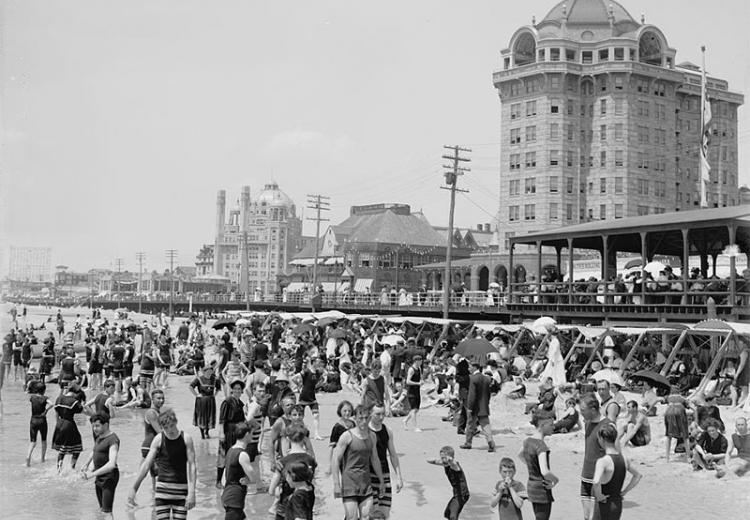Having Fun: Leisure and Entertainment at the Turn of the Twentieth Century

Bathers, Atlantic City, NJ.
"If one looks at the United States from one ocean to the other in July and August, he will see millions of people at play—people of every social and financial gradation; for few are so poor as not to take at least a short vacation."
From "The People at Play," World's Work (1902)
How did Americans "have fun" a century ago? Where did they vacation and how did they get there? In a time of profound social and cultural change, the increasingly mechanized urban environment left many feeling anxious. The construction of parks in urban areas, the recommendation of physical exercise as a way to ward off stress, and the rise of spectator sports became part of the leisure landscape in the United States. Vaudeville, dance halls, and motion pictures became popular, while new modes of travel allowed Americans to escape to mountain and seaside resorts. In this lesson, students will learn how Americans spent their leisure time and explore new forms of entertainment that appeared at the turn of the century. In addition, they will learn how transportation and communication improvements made it possible for Americans to travel to new destinations.
Guiding Questions
How did innovations in culture and technology influence the development of a leisure industry in America at the turn of the twentieth century?
How has technology continued to influence culture and leisure in the U.S. since the turn of the twenty-first century?
Learning Objectives
Analyze the new forms of entertainment that became popular at the turn of the century.
Compare how Americans at different economic levels spent their leisure time.
Evaluate how innovations in technology affected the leisure industry and popular culture in the United States.
Analyze the role of mass media in the construction of the concept of leisure and entertainment in the United States.
